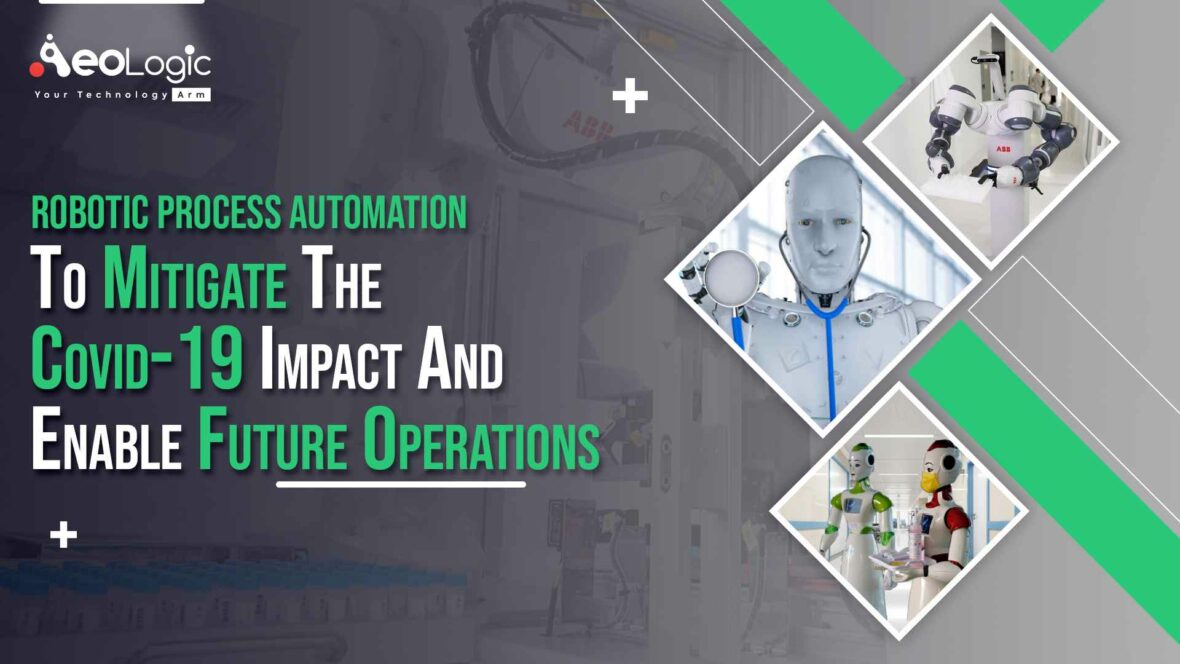The black swan event which has risen from past some time now, the Covid-19 pandemic challenges the world in all territories every industry has changed the way they use to do work before coronavirus. Covid-19 makes people think out of the box and too not only adapt to the new lifestyle but also make the best out of it. Businesses have implemented new technologies to increase the effectiveness and efficiency of their business.
Robotic process automation (RPA) is the use of software with artificial intelligence and machine learning capabilities to handle high volume repetitive tasks that previously required humans to perform some of these tasks include handling all the queries, doing calculations, maintaining records, and making transactions.
Still, there are several misconceptions about RPA:
- RPA is not a humanoid robot it does not have a physical form and no resemblance to humans
- RPA cannot replace humans or replicate human cognitive functions it does not have a brain of its own and cannot perform logical and critical thinking as humans do.
RPA Impacts and Future Operations
1. Healthcare Sector:
Many healthcare organizations have realized the benefits of implementing robotic process automation within their business and clinical care operations. These organizations continue to witness lower costs, an increase in revenue, and improvements in the care they are providing to the patients. The traditional way of maintaining the data is not feasible during covid-1 because of the massive numbers of deceased patients. To make the process smoother, effective, and efficient the implementation of RPA is done.
2. Remote Working:
The coronavirus has changed the perspective of the world, the way business used to be had now changed completely, people are have realized that working from home can also be a part of work, online meetings, etc is new work life and to make it smoother robotic process automation is used to compile and synchronized the work of the employees working remotely in the most profound manner.
3. Manufacturing Sector:
In the manufacturing sector, we will probably see only a part of the workforce back in the factories for at least a certain period. It is imperative for the manufacturing sector to understand and utilize robotic process automation (RPA) and other technologies to its advantage, especially during this tough time.
Following are some of the benefits the manufacturing sectors get from robotic process automation (RPA):
- Optimization of time centric and repetitive process
- Increase in go-to-market speed along with an increase in productivity
- Minimizing human errors thereby reducing costs and increasing compliance
- Increasing agility in operations
4. Empowering logistics:
Automation helps to improve customer and satisfaction, optimize operations metrics like reducing days outstanding and achieve sustainable competitive advantage yet a lot of logistics providers have not automated key customer-facing processes like scheduling shipments, monitoring changes, and updating customer statuses not to mention behind the scenes processes like supply and demand planning capturing load information and invoices which also affects the ability to deliver an astonishing customer experience.
5) The banking sector:
Banking and finance are growing exponentially to support this growth industry has always adopted new-age technologies like RPA which enables organizations to provide secure, faster, and self-service solutions to customers in an array of technology robotic process automation is one of the fastest and widely adopted technologies. Automation is all set for its next wave to come and robotic process automation (RPA) will represent its upcoming wave profoundly, this will lead to solving many challenges in the banking and financial services industry.
Banks and financial institutions are full of manual repetitive processes like document verification, KYC accounts closure accounts payable, and so on. RPA can easily be integrated with legacy systems UI automation, it can fetch data from multiple sources to provide an intelligent report for faster decision making.
Conclusion:
To conclude we say that this is just the tip of the iceberg as robotic process automation is capable of empowering all the different sectors. The future holds a strong and prominent position for RPA hence every business should implement it to get a competitive advantage.






